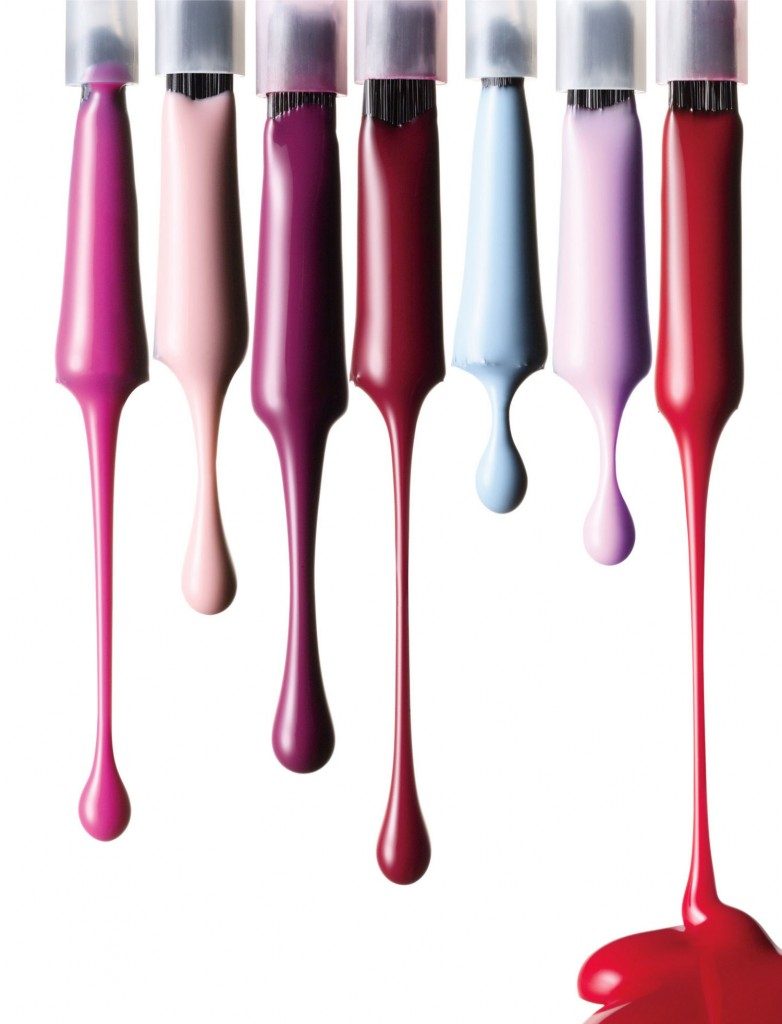
More terminology every nail polish addict should know
By Rebecca Peterson, Humour Editor
In the second installment of this two-part series, we’re covering a few more popular nail polish finishes. Let’s begin!
Holographic
The most basic definition of holographic nail polish (“holo”) is this: holo = rainbows. If you’re rolling a glitter polish around in your hands and it only reflects one or two colours, it’s not holo. If the sparkles reflect lots of colours, it’s holo. Holo comes in many different forms, but the one you’re most likely to see in stores is holo glitter and scattered holo topcoats (tiny little silvery holo specks meant to be worn over another colour). Linear holos are more condensed holo polishes that have a base colour, but shift into rainbow reflections in the light (kind of like an oil slick). It’s damn near impossible to find magical linear holos in store, so it’s best to look for them online.
Duochrome/Multichrome
Duochrome and multichrome polishes have magical colour-shifting powers too, but as they do not reflect rainbows, they are entirely different from linear holos. With most multichromes, you see one colour when the nail is angled one way, and another colour at another angle. For some reason, a very common combination of colours in multichrome polishes is purple and green, but there are other options that might be more appealing. As previously mentioned in a past article, Revlon has released a gorgeous pink and green duochrome polish called DayDreamer, and as I write this I’m wearing Sally Hansen’s Black & Blue (which is honestly more teal and dark grey-purple than Black & Blue, but still pretty). I find a lot of duochromes apply very sheerly, so you’ll definitely need at least two coats for full coverage. They also look pretty nifty with a matte topcoat applied overtop, which brings us to…
Matte
Matte is exactly what it sounds like—nail polish with a matte finish. You used to have to buy specific polishes with a matte formula, but the creation of mattifying topcoats has made regular polishes more versatile. Given that not everyone has enough change to buy two different finishes of the same polish—and matte polishes dry very quickly which make them finicky to apply anyway—this is a very good thing. Feel free to apply matte topcoats to your crèmes, shimmers, metallics, and duochromes, but maybe stay away from your glitters and scattered holos. In most cases it dulls them and takes all the magic away.
Jelly/Crelly
A jelly polish is a borderline-translucent polish that takes several coats to achieve the desired effect—to make your nails look like jelly. You won’t ever really achieve full opacity with a jelly polish, which is kind of the point. Some nail artists like to suspend glitters and decals in layers of jelly polish to achieve a fishbowl effect, but overall it’s not for me. I usually wind up using jelly polishes overtop a coloured base to add an effect, instead of wearing them as a style in their own right. A crelly polish is just a crème-based jelly polish. It’s a little more opaque, and often has glitter suspended in the formula to achieve a kind of milky effect.
Textured
It seems like every nail polish company has their own terminology for textured finishes. I’ve seen everything from “liquid sand” to “rough diamond” to describe them. I think “textured” is a safe catch-all, as this can also describe different types of texturing. Basically what you’ll get out of a textured nail polish is a roughened finish, usually one that’s quite matte. A glossy topcoat can help to add a little shine, and if you apply it thinly you can still preserve the texture of the polish. I have Get Your Number from OPI’s Liquid Sand collection, which is a textured blue polish with both scattered holo and holographic glitter suspended in the formula. It applies to full opacity in two coats and dries very quickly, and because it’s textured, I actually don’t mind the matte finish over the glitter, though I often add a glossy topcoat anyway. Like glitter polishes, textured polishes are ridiculously hard to get off without a little help, so I would highly suggest laying down a peel-off base coat first.
These articles really only cover a very small portion of the enormous world of nail polish, but these are the terms you’re most likely to see used by beauty bloggers and vloggers. Good luck with all your future nail polish adventures!

